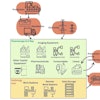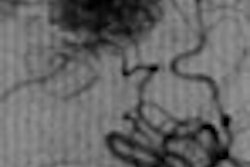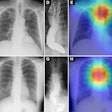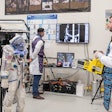Proponents of nationwide licensing standards for U.S. radiologic technologists are nothing if not persistent. Led by the American Society of Radiologic Technologists (ASRT), they have once again taken up the gauntlet to implement federal licensing standards, in the form of the Consistency, Accuracy, Responsibility, and Excellence (CARE) in Medical Imaging and Radiation Therapy Act.
The ASRT of Albuquerque, NM, is making the 2007 version of the CARE bill the centerpiece of its legislative effort, as it has done with every Congress since the CARE bill's first introduction in 2000. The ASRT is making the push "because we feel federal minimum standards for education and certification of personnel are required for quality healthcare," said Christine J. Lung, ASRT's director of government relations.
But the RT community is not entirely united behind the effort, with a few high-profile holdouts complicating the ASRT's efforts. And the bill's passage could have far-reaching ramifications, depending on what's included in the credentialing standards that would be created following implementation.
What it means
The CARE legislation was reintroduced into the 110th Congress earlier this year after failing to pass in the last minutes of the 109th session. In the U.S. Senate, S. 1042 was introduced on March 29 by U.S. Sens. Michael Enzi (R-WY) and Sen. Ted Kennedy (D-MA), while the CARE bill is listed as H.R. 583 in the House of Representatives, submitted by U.S. Rep. Michael F. Doyle (D-PA). The House bill has seven co-sponsors, while the Senate's bill has 14 co-sponsors.
Unlike previous education and standards legislation, the House and Senate will consider the same bill -- the one approved by the Senate just before adjournment of the last Congressional session. Time ran out last December before the House could rectify differences between its bill and the Senate's approved legislation, killing the CARE bill once again.
Under the new proposal, radiologic technologists and radiation oncologists will be required to obtain either a state license to practice or meet federal standards in order to have their services paid by Medicaid and/or Medicare. There will be no federal license requirement in order to practice. State licenses will be based on the federal education and credentialing standards.
The legislation also would cover nuclear medicine, interventional radiography, cardiovascular technologists, sonographers, radiologist assistants, and bone densitometrists.
The content and scope of the education and credentialing standards are still to be determined. The U.S. Department of Health and Human Services (HHS) will solicit public comment on what should be included in the guidelines and statutes.
The ASRT has been working with the Alliance for Quality Medical Imaging and Radiation Therapy -- a coalition of more than 20 imaging and radiation therapy organizations created by ASRT and the Society of Nuclear Medicine Technologists Section -- to draft a set of standards to propose to HHS. The ASRT expects those recommendations to be the foundation on which HHS will develop its final rules. A draft of the document is available through the ASRT.
Getting paid
A key element of the CARE bill is the requirement that a technologist must provide evidence of certification, so that the healthcare facility can, in turn, prove the credentialing of all their RTs before receiving any Medicare and/or Medicaid reimbursements.
Lung said that the provision strengthens the enforcement of the legislation, "considering Medicare pays for about 45% of all healthcare in the U.S., and most private insurance programs follow Medicare requirements for quality standards. We feel we will get a more comprehensive and all-encompassing set of educational credentialing standards."
As for benefits, the ASRT projects that the CARE bill will result in savings of $92 million in the first year of adoption. The savings come from, among other sources, fewer repeated examinations and reduced expenses on consumables, such as film and other related resources to perform imaging procedures. "If we can reduce the number of repeated exams by putting in some simple education certification standards, that will save money right there," Lung added.
RT dissent
Not everyone in the RT community is enamored of CARE. Most notably, the Hawaii Society of Radiologic Technologists (HSRT) has actively opposed the legislation, drawing the ire of the ASRT.
The HSRT board of directors first opposed the CARE bill in 2003, and, according to the ASRT, has vacillated between a stand of neutrality and opposition since that time. After discussing its differences of opinion on the legislation, the ASRT asked the Hawaii group to remain neutral on the proposal, but the HSRT restated its opposition to the legislation in June 2006.
As a result, last December the ASRT imposed sanctions against its Hawaiian affiliate, denying the local chapter financial assistance and excluding it from the ASRT's group exemption as a nonprofit organization for tax-exempt status. In addition, the ASRT will no longer review HSRT's continuing education programs free-of-charge, as it does for all other affiliate societies. (Attempts by AuntMinnie.com to reach the HSRT for comment were unsuccessful.)
In a written statement at the time, ASRT chairman Cathy Parsons said that "affiliate societies have every right to express an opinion about ASRT initiatives, but the ASRT, in turn, has the right to withdraw financial support from any group that is deliberately working against the ASRT mission and goals."
Garnering support
The final set of education and credentialing standards, needless to say, will go a long way in determining support for the initiative.
The final standards could have "a severe impact on the industry," according to Dr. Greg Rose, radiologist and president of Houston-based teleradiology firm NightRays. "If they put conditions that have to do with American training or being English-speaking or that you have to be on American soil (to interpret images), that will have an impact on teleradiology," he said.
The CARE bill has also ignited some lively discussion in the AuntMinnie.com Forums.
One certified radiologic technologist suggested that the ASRT and St. Paul, MN-based American Registry of Radiologic Technologists (ARRT) should go "out of their way" to create a standard "whereby all technologists can become ARRT-credentialed." The technologist added that one option would be to create a "second radiologic technologist credential for those of us currently performing as technologists who have credentials in states that have their own requirements, testing, and credentials, and either give reciprocity as some of the states give the ARRT, or even require us to take the ARRT examination."
Abraham Gutman, founder and CEO of Boston-based radiology telecommunications firm AG Mednet, thinks the concept of federal standards in healthcare is generally a good idea, especially if the outcome is better patient care. The most important benefit from the CARE bill, he believes, would be "a more fluid talent market, which, in turn, would benefit all communities."
Gutman also thinks the legislation could be the first in a series of bills that may lead to a national licensing authority or a set of standards accepted by all states. "States have a very legitimate interest that patients within their borders are given the best care available," he said. "If doctors, for example, would practice medicine across state lines based on federally mandated standards or a standard agreed upon by all the states, then the state would be able to get the same quality of care as the federal level."
By Wayne Forrest
By AuntMinnie.com staff writer
May 1, 2007
Related Reading
CARE Bill introduced into U.S. Senate, April 2, 2007
CARE Bill reintroduced in U.S. House, January 23, 2007
House fails to pass RadCARE Bill, December 11, 2006
Senate passes RadCARE Bill, December 7, 2006
RadCARE Bill moves forward, September 21, 2006
Copyright © 2007 AuntMinnie.com



















